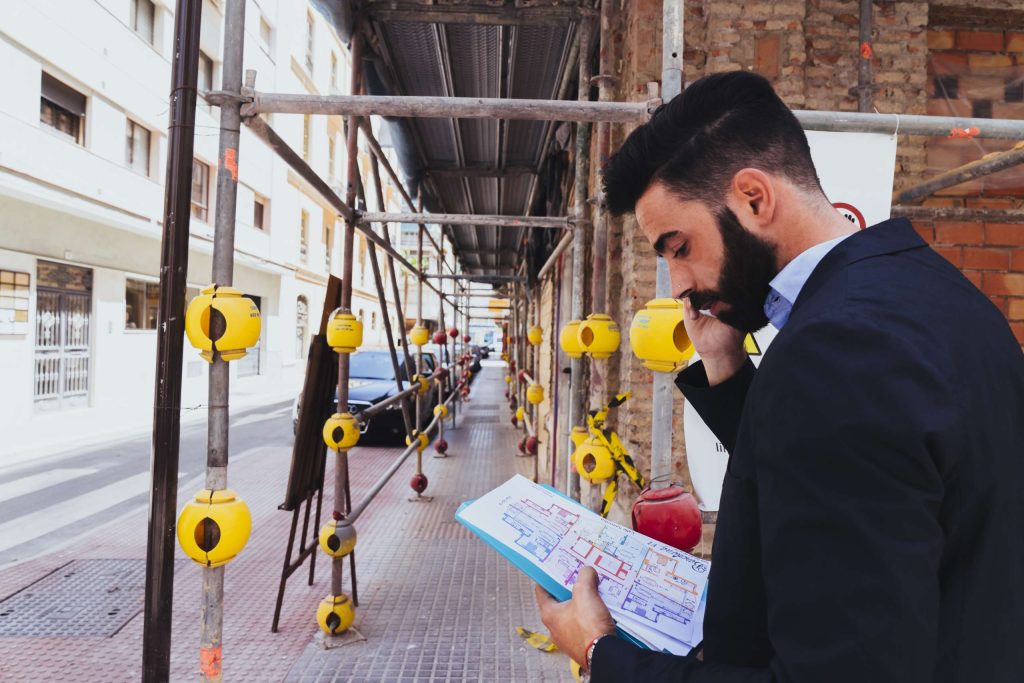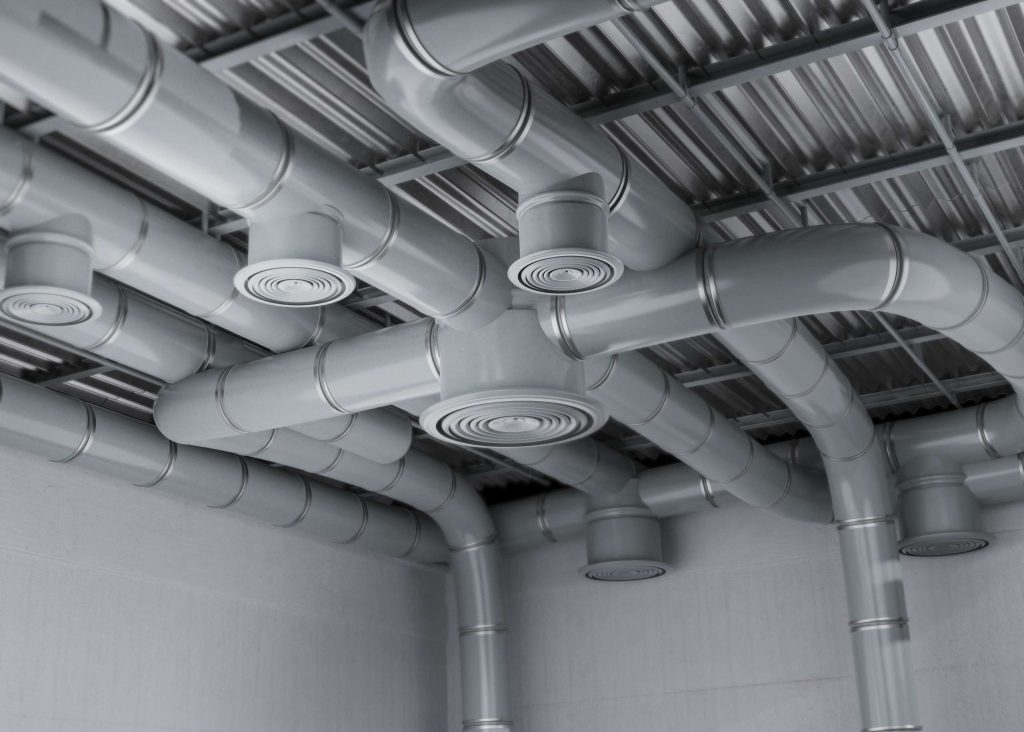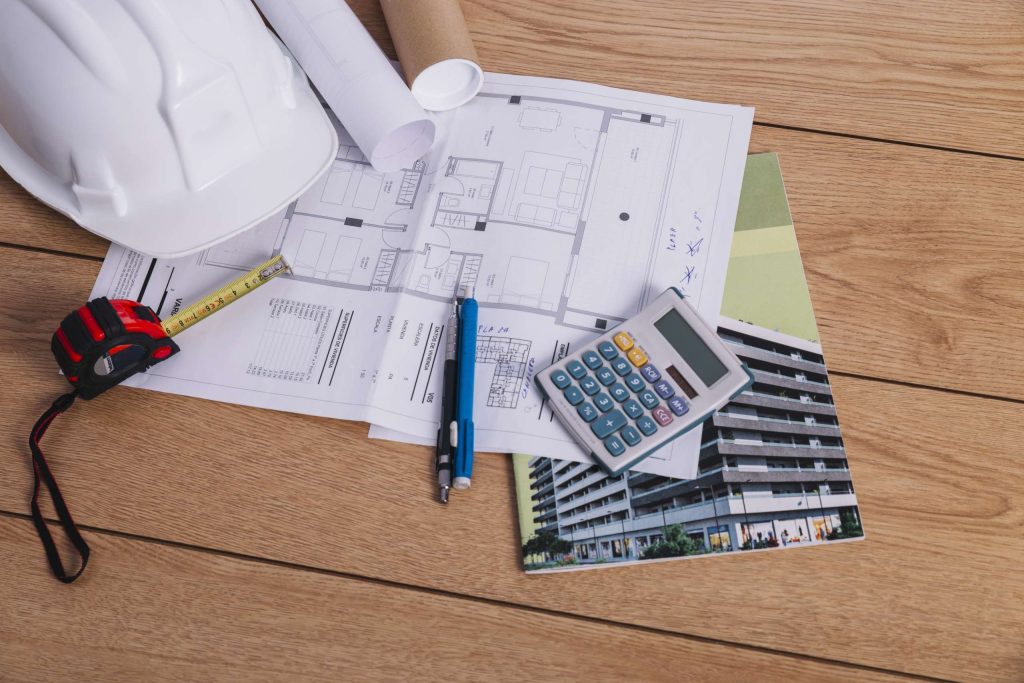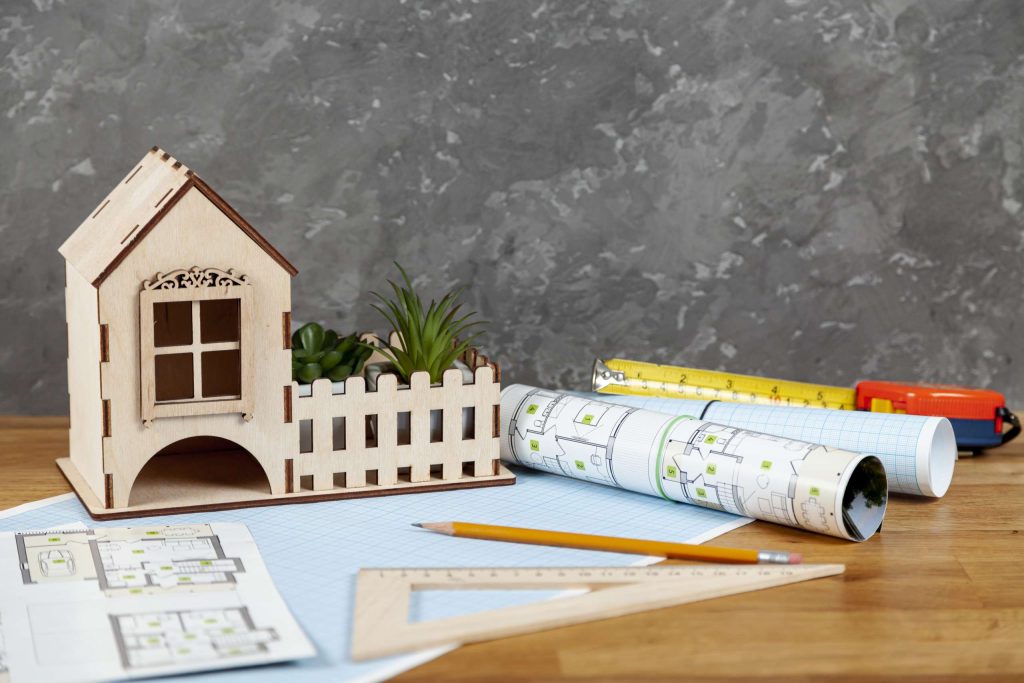Expert Tips For A Flawless Laminate Flooring Installation With Tap/Cock System


Laminate flooring gives your interiors an aesthetic and finished look. It is becoming a popular choice among people who are seeking a stylish and practical update. Also, laminate flooring is affordable, durable, and easy to install. However, achieving a flawless finish, particularly with the increasingly utilized tap/lock system, requires careful planning and execution. Also, it is very crucial to have a proper laminate flooring estimate in order to have a successful project. This comprehensive guide will equip you with expert tips to ensure a professional-looking laminate floor installation.
Accurate Measurements and Material Estimates
Before diving into the installation process, meticulous planning is essential. The proper planning begins with calculating the exact floor area you intend to cover, hence, calculate floor area for laminate flooring. Start by measuring your floor length and width. Account for irregularities by taking measurements at multiple points. This will help you in estimating your layout plan.
Choosing the Right Laminate Flooring
Laminate flooring comes in various styles, thickness, and AC ratings, each impacting durability and cost. Consider factors like foot traffic, budget, and desired aesthetics. Opt for thicker planks (8mm or above) for high traffic areas. Higher AC ratings (AC3 and above) signify greater resistance to wear and tear. Also, consider your specific needs and budget before selecting the laminate plank.
Importance of Underlayment
Underlayments play a critical role in the longevity and performance of your laminate floor. It provides cushioning, moisture protection, and sound insulation. That’s why you need to identify the appropriate underlayment based on your project’s details. Choose an underlayment compatible with your chosen laminate and subfloor type.
Mastering the Tap/Cock System
The tap/cock system simplifies installation, but understanding the mechanics is essential. Familiarize yourself with the specific locking mechanisms of your chosen laminate. Practice connecting planks on scrap material before tackling the actual floor. Ensure each plank clicks securely into place with a tight audible snap.
Preparing the Subfloor
A smooth level subfloor is vital for a seamless and even laminate installation. Inspect your subfloor for unevenness, cracks, or damage. Rectify any imperfections by sanding high spots, filling depressions with a suitable leveling compound, and repairing cracks. Ensure the subfloor is clean, dry, and free of debris before proceeding.
Acclimation is Important
Floor laminate expands and contracts slightly with temperature and humidity variation. In order to prevent buckling or gaps, allow the flooring to acclimate to the room’s environment for 48 hours before installation. Store unopened boxes in the room where they will be installed, maintaining consistent temperature and humidity levels to prevent any irregularity.
Installation Techniques and Tips
Here is the some experts tips for seamless installation
- Start with the longest wall- Work your way from a prominent wall towards the least visible wall or area. This will make sure a visually pleasing layout and also minimize waste.
- Use spacers- Maintain a consistent gap between the laminate planks and the wall using spacers. These gaps allow for natural expansion and contraction of the flooring.
- Tap gently- Use a tapping block to connect planks firmly without damaging the edges.
- Cut precisely- Use a sharp laminate flooring saw for clean and accurate cuts around corners, doorways, or pipes.
- Remember the transition- Install appropriate transition strips at doorways and in between different flooring types. For creating a smooth and finished look.
Professional Assistance For Complex Installation
While the tap/cock system simplifies installation for laminate flooring, along with complex layouts, uneven subfloors, or specific needs may require professional help. In such situations access experts assistance for smooth laminate flooring.
Post-Installation Maintenance and Care
Post installation maintenance is essential as it will extend the lifespan of the laminate floor. It involves regular cleanance and a soft brush vacuum. Also, use specific cleaners to avoid damaging the surface of the floor. With proper care you can enjoy the beauty of the laminate floor for longer periods of time.
Why Do You Require Accurate Laminate Flooring Estimate
Before diving into the installation process, it is important to have an accurate laminate flooring estimate for the flooring project. Initially it involves calculating the floor area and additional factors such as waste and cuts. Also, the material to consider as per the floor requirements and other factors including the estimation around tap/cock system. Accurate laminate flooring estimate enables you to have a precise flooring estimate that will ensure you order the right amount of materials, minimizing waste, and ultimately saving costs.
Why to Consider Remote Estimation For Laminate Flooring Estimate
For laminate flooring estimate, remote estimation could be your partner for accuracy and ease. We are an experienced estimating service provider with over a decade of experience. Not just laminating the floor, we have handled a number of successful projects. With our estimation services customers can focus on their bidding or other aspects of the projects. We offer flooring estimates and take-off services at a reasonable price. We have a team of professionals who are cost estimator experts. They will include all essential aspects in order to provide you with accurate estimates. You can be rest assured that you will be offered with reasonable and accurate laminate flooring estimates by our team. We are presenting our services in the USA with a number of satisfied clients and successful projects. With our estimation services we assist contractors, developers, subcontractors, and managers to win bids in their projects.
If you are also in need of an accurate laminate flooring estimate then send us your project’s details. We will in the meantime provide you with an accurate estimation, so that you can minimize your cost and efforts for a successful project.
The Ultimate Xactimate Estimating Guide: How to Maximize Efficiency


Efficiency plays a vital role in the world of construction projects and renovations. When estimating costs and managing assignments, Xactimate emerges as the ultimate tool. Its user-friendly interface and powerful features enable you to enhance efficiency throughout the estimation process. This comprehensive guide explores the functionalities of the Xactimate estimating service. It provides insights on how to maximize the potential of this software. Whether sending and tracking assignments or analyzing adjuster performance and industry trends, this guide equips you with the knowledge and tools to streamline your estimating process for results.
What is Xactimate?
Xactimate is a computer software system commonly used in the insurance industry to estimate construction costs. While it has gained popularity among insurance adjusters for calculating building damage, repair expenses, and settlement offers, it’s important to note that Xactimate for contractors is primarily designed for tract homes. It may not provide cost estimates for building, historical, or high-value properties.
Contractors and builders typically rely on subcontractor bids and their expertise in estimating costs and timelines for projects using Xactimate. This can put contractors at a disadvantage when negotiating settlements with insurance adjusters, especially when comparing Xactimate estimates with contractor estimates.
To ensure a settlement for property owners, it is recommended that they or their representatives obtain an estimate from a reputable licensed construction professional who is trained in providing Xactimate estimating services. This helps level the playing field during negotiations and provides an assessment of repair or replacement costs. Additionally, homeowners contractors may find it beneficial to gather subcontractor bids as supporting documentation for their estimate.
Why do Construction Estimating Companies use Xactimate?
For the past few years, xactimate estimating services have emerged as a revolutionizing tool for estimating construction projects efficiently and accurately. A wide range of xactimate experts professionals in the construction sector, like construction estimators, contractors, and insurance companies, leverage this tool, as it helps streamline the entire estimating process. It provides a comprehensive database, making it easier for professionals to generate accurate and precise estimates for various construction and restoration projects.
Accuracy And Consistency
Xactimate services provide precise estimates based on real-time pricing data and industry standards, ensuring accuracy and consistency in project planning and execution.
Time Efficiency
By automating and streamlining the estimation process, Xactimate services reduce the time required to generate detailed project estimates, leading to faster project initiation and improved timelines.
Enhanced Communication
Xactimate services foster better collaboration between all parties by providing standardized and transparent estimates, minimizing confusion, and facilitating smoother communication throughout the project’s lifecycle.
Insurance Compliance
Xactimate services help align with insurance guidelines and regulations, ensuring that estimates comply with specific policies, expediting the claims process, and avoiding disputes or rejections.
Detail-Oriented Estimates
Xactimate services enable users to create highly detailed estimates, covering material costs, labor expenses, and more, instilling confidence in clients and insurers while aiding effective resource allocation and project budgeting.
Visual Representations
Xactimate services offer visualization tools like diagrams and 3D models, presenting complex information in an accessible manner and reducing misunderstandings and misinterpretations.
Adaptability to Industry Changes
Xactimate services provide frequent updates and industry integration, ensuring that estimates remain relevant and aligned with construction and property restoration projects’ latest materials, techniques, and regulations.
How Xactimate Estimating Service Work
- Gathering Data: The Xactimate estimating service collects all the information for your project, including specifications, measurements, and material requirements.
- Utilizing Xactimate Software: The software takes this data. Utilizes it to generate a cost estimate. The software considers market prices, labor costs, and other relevant factors.
- Expert Review: The Xactimate experts carefully review the estimate to ensure its accuracy and completeness. Any necessary adjustments are made during this stage.
- Presentation: The final estimate is presented in an easy-to-understand format, ready for you to use in project planning, budgeting, and client communication.
How does Xactimate integrate with Remote Estimation?
With Xactimate’s cutting-edge integration capabilities, estimation has never been more straightforward. As a renowned construction cost estimator, our xactimate experts can seamlessly connect Xactimate with our estimation tools to streamline the claims resolution process from anywhere. This groundbreaking integration allows us to harness the power of Xactimate’s powerful estimation tool while benefiting from the convenience and efficiency of remote estimation.
By leveraging Xactimate’s comprehensive surveys, pricing tools, and data tables, we can create accurate estimates and reports without requiring manual file uploads or data entry. The integration also enables you to access highly detailed 3D models and measurements directly within Xactimate, eliminating the hassle of transferring data between platforms. With Xactimate’s integration with remote estimation, you can quickly estimate repair costs, resolve claims remotely, and provide policyholders a seamless and efficient experience.
Maximize Your Construction Estimation Efficiency with Remote Estimation
Are you struggling with inefficient construction estimation processes? Say goodbye to manual estimation and embrace the power of remote estimation for a more streamlined and efficient process. With our xactimate for contractors and expert team, we can help you save time, reduce errors, and increase accuracy in your construction estimation. Don’t let your competition get ahead – contact us today to learn more and start maximizing your construction estimation efficiency with remote estimation.
Understanding the Estimating Phases of Your Construction Project


Understanding the stages of estimating construction costs is crucial for managing budgets and projects effectively. This article aims to provide insights into these phases, from analyzing project details, reviewing specifications, drawings to performing takeoffs and creating estimates. Each step plays a role in developing a budget. Additionally, we will explore which part of construction cost estimating services NYC possesses the expertise needed to analyze expenses and determine pricing for bidding processes. You can improve your understanding of the estimation process by learning about these phases and recognizing the significance of construction estimators. Ensure your construction project’s success with compliance with the Department of Design and Construction (DDC) norms.
Construction Estimators and Their Role
Estimators play a role in the construction industry by determining the expenses of a construction project. Their responsibilities include reviewing drawings, engineering plans, and project specifications to grasp the scope and identify elements. The primary objective is to analyze and estimate the costs involved in construction projects. They understand the project requirements by examining proposals, blueprints, specifications, and other relevant documents.
This information helps them calculate the expenditure for materials, labour, equipment, and other necessary expenses. The accuracy of their estimates is crucial because any errors could potentially result in losses for the company. Their contribution is essential in ensuring that construction projects are profitable endeavours.
Why do We Need Estimates for Construction Projects?
Budgeting and Financial Planning
Construction estimates break down the expected costs of a project, helping project owners, developers, and construction companies plan their budgets and allocate funds accordingly.
Decision Making
Construction estimates provide information when making decisions about the feasibility and viability of a project. Stakeholders can analyze the estimated costs to determine if they align with their goals and resources.
Procurement and Contracting
Construction estimates play a role in procurement by facilitating contract negotiations, obtaining bids from subcontractors and suppliers, and ensuring the project stays within budget.
Risk Management
Estimating costs allows for identifying risks. Project managers can analyze the estimates to identify areas where costs may exceed the budget, taking measures to minimize risks and avoid setbacks.
Project Planning and Scheduling
Construction estimates aid in developing project plans and schedules by providing a timeline based on estimated costs. This enables resource allocation and effective project management.
The Department of Design and Construction (DDC) in New York City creates structures and renovates public buildings throughout the city. Although they may not directly offer cost estimates for construction, their part involves supervising and directing projects to ensure they comply with the city’s requirements and cater to the needs of both residents and visitors.
What are the Different Phases of Construction Projects Estimation?
Estimating a construction project is a process that plays a role in determining the project’s feasibility and financial viability. It involves identifying and quantifying all the expenses associated with the project, including labour, material, equipment, and overhead costs. Accurate estimation ensures the project stays within the timeframe and budget.
The process of estimating a construction project can be broadly categorized into five stages:
Order of Magnitude Estimate: This initial estimate is typically created during the design phase. It provides an estimate of the project cost based on information such as its size, type, and location.
Schematic Design Estimate: This estimate is more detailed than the order of magnitude estimate. It is developed during the design phase. It utilizes project information like preliminary drawings and specifications to deliver a more precise cost estimation.
Preliminary Estimate: Prepared during the design development phase, this estimate employs drawings and specifications to provide a more accurate cost projection. It is commonly used for bidding purposes. It is securing financing.
Construction Document Estimate: This particular estimation occurs during the construction document phase using construction drawings and specifications to predict costs accurately. The purpose of this tool is to assist with project budgeting and managing costs.
Bid Estimate: Contractors interested in the project prepare an estimate based on their understanding of the requirements and cost structure. This estimate serves as their bid for the project.
Each stage of the estimating process involves a sequence of tasks, including:
- Quantity Takeoff: This step entails identifying and quantifying the materials and labor needed for the project. Construction takeoff services play a role in construction project management.
- Unit Pricing: This involves determining the cost per unit for each material, labor item, and equipment.
- Direct Costs: These are the expenses directly linked to the project, such as materials, labor, and equipment.
- Indirect Costs: These expenses, such as overhead and profit, are not directly associated with the project.
- Contingency: This is an allowance for costs that may arise during the project.
The accuracy of the estimate relies on information and the estimator’s expertise. Once complete, the forecast undergoes—approval by the project team. Construction cost estimating services NYC can be used to develop a budget for the project, secure financing, monitor project expenses, and make adjustments.
Get a Fast & Accurate Construction Estimate with Remote Estimation
Are you looking to get a fast and accurate construction estimate in NYC? Look no further than Remote Estimation. Our expert team utilizes cutting-edge to provide comprehensive construction takeoff services to evaluate and provide the most precise estimate possible. Don’t let budget concerns hold back your project – contact us today.
The Impact of Duct Takeoff on Airflow Distribution in HVAC Systems


HVAC systems are vital for every residential, commercial, office, or home building. It ensures that the temperature of your premises will be balanced with the help of mechanical ventilation. For instance, it keeps your indoor space warm in winter and cool in summer. In an HVAC system, airflow distribution plays a vital role in the even distribution of conditioned air in the space. Proper airflow distribution ensures that every corner of your premises receives adequate airflow. That’s where duct takeoff is crucial to ensure the even distribution of airflow in the HVAC system. A properly designed duct takeoff ensures balanced airflow, preventing hot or cold spots and enhancing comfort. Duct takeoff services can be a wise decision to ensure efficient airflow in the HVAC system.
Diving into Duct Takeoffs
Duct takeoffs in HVAC systems are designated points where a secondary duct branches off from the central duct to supply air to specific areas. The primary purpose is to efficiently direct conditioned air, ensuring precise airflow distribution throughout the building. Duct takeoffs are vital in maintaining consistent temperatures and optimizing overall HVAC system performance by regulating air supply to various zones.
There are various types of duct takeoff configurations:
- Rectangular
- Spiral
- Angle
Factors That Can Influence the Airflow Distribution
Duct Design and Layout
Adequately sized and well-designed ductwork ensures smooth and efficient airflow. The layout must consider the distances and turns air must travel to reach various zones, impacting distribution.
Blockages
Any obstacles within the ductwork, such as debris, construction materials, or accumulated dust, can impede airflow, leading to uneven distribution.
Air Diffusers and Grilles
The selection and positioning of air diffusers and grilles are crucial in directing conditioned air into a space. Incorrectly placed diffusers can disrupt airflow patterns.
Balancing Dampers
Dampers are used to control the volume of air passing through a duct. Improperly adjusted or malfunctioning dampers can result in uneven airflow distribution, affecting temperature consistency.
Impact of Proper Duct Takeoff on Airflow Distribution
- Efficient Airflow Distribution
Well-designed duct takeoffs guarantee an even and effective flow of conditioned air throughout the structure. This reduces the possibility of hot or cold areas by ensuring constant airflow. An atmosphere where you can enjoy a steady and comfortable temperature is created by proper distribution, which improves total indoor comfort.
- Balanced Temperature Control
This helps maintain a balanced temperature across your premises. Maintaining a constant temperature throughout the facility is more accessible by efficiently allocating air to various zones. In addition to improving comfort, this balanced temperature management guarantees dependable and effective operation of the HVAC system.
- Energy Efficiency
The design of the duct takeoff is critical to energy efficiency. The HVAC system runs more efficiently and uses less energy when air is precisely directed where required. This results in lower energy costs and makes the operation more ecologically friendly and sustainable.
Benefits of Choosing Duct Takeoff Services
Accurate Measurement
Duct takeoff services ensure precise measurements of ductwork components, contributing to accurate project planning and execution. This accuracy helps in avoiding errors in material estimation and construction.
Cost Estimation
Takeoff services, spiral duct takeoff and rectangular duct takeoff, enable accurate measurements, aiding in precise cost estimation. This ensures realistic construction budgets, helping clients and contractors make informed financial decisions.
Customization
Service providers offer customized solutions tailored to the specific needs of a project, like rectangular duct takeoff. This level of customization ensures that the HVAC system is designed to meet the unique requirements of the building or structure.
Collaboration
Collaborative efforts between duct takeoff services and project stakeholders enhance communication. Clear understanding and cooperation contribute to the successful execution of HVAC projects, ensuring alignment with client expectations.
Time-Saving
Utilizing services accelerates the project timeline. With accurate measurements and streamlined processes, contractors can proceed with construction promptly, reducing overall project duration.
Accuracy
The precision offered by service providers minimizes the likelihood of errors in design and construction. This accuracy translates into a more efficient and effective HVAC system, meeting performance standards and client expectations.
Enhanced Productivity
Opting for takeoff services, like spiral duct takeoff, enhances productivity by providing detailed and organized documentation. This allows construction teams to work more efficiently, reducing the potential for rework and ensuring smooth project progression.
How Does Remote Estimation Ensure Accuracy in Duct Takeoff?
Remote Estimation is a trusted name in duct takeoff services and deals with various clients in residential, commercial, or other projects. We help our clients with accurate dimensions and quantities required in HVAC systems for efficient airflow distribution. We have employed a team of estimators to help you with the accurate cost in our detailed takeoff reports. Here are the features of our duct takeoff services that help ensure accuracy:
Expertise in Ductwork
We have an experienced team who specializes in ductwork and HVAC systems. Our team has a deep understanding of material and quantity, helping you with your specific duct takeoff.
Quick Turnaround
We understand the importance of accuracy in duct takeoff. That’s why we provide a quick turnaround time of 24-48 hours.
Cost-Effective
Our services, like rectangular duct takeoff and spiral duct takeoff, help contractors and subcontractors save money on material with our accuracy.
Advanced Technology
At Remote Estimation, we leverage cutting-edge software to provide error-free takeoffs.
Insulation Estimator’s Guide to Waterproofing And Insulation Estimating


Accurate estimation plays a critical role in the world of construction. When it comes to waterproofing and insulation, having a reliable construction or insulation estimator for estimating is crucial. They have the resources for construction professionals to help them navigate the complexities of estimating costs and materials for various aspects of a building. Professionals can ensure that your projects are financially feasible and completed on schedule. They do this by understanding their methods of estimating construction costs, like allocating costs and unit cost estimation. In this article, we will delve into the significance of estimates in waterproofing and insulation, offering insights and tips for estimation.
What is Waterproofing?
Waterproofing involves making an object or structure resistant to water infiltration. It is used in fields, such as construction, to protect buildings and materials from water damage. These safety measures are often called water resistance because they can withstand water penetration, high pressure, and moisture vapour transmission through the structure. Construction estimators play a role in assessing the expenses and resources needed for projects. Their responsibility is to ensure that suitable materials and techniques are employed to achieve waterproofing while staying within limits.
What are the Different Types of Waterproofing Materials?
Different types of materials are commonly utilized in the construction of buildings.
Cementitious Waterproofing: This method uses materials frequently used in internal areas prone to wetness, such as bathrooms. However, it is not designed to withstand weather and sunlight exposure.
Liquid Waterproofing Membrane: This particular coating offers flexibility. It transforms into a rubbery layer once it has cured. Its elongation properties are high. Depends on the type of polymer used.
Bituminous Coating Waterproofing: Also referred to as asphalt coating, this method provides both flexibility and water protection. Nevertheless, prolonged exposure to sunlight can cause it to become brittle and fragile, which is why it can be modified by incorporating materials.
Bituminous Membrane Waterproofing: Commonly used for roofs with slopes, this method is self-adhesive. It comes in types, including exposed versions that can withstand the effects of weather conditions.
Polyurethane Liquid Membrane Waterproofing: This option is suitable for roof areas. Possesses excellent flexibility. However, it requires an evaluation of the slab’s moisture content before application.
These represent some of the materials employed in building construction. It is highly recommended to consult with a construction professional who can determine the appropriate approach for your project and provide reliable insulation estimating solutions.
Purpose of Insulation
Insulation in construction projects refers to the prevention of the transfer of heat through the building structure. Insulation is a method widely used to keep the flow of heat inside the building, thereby reducing the consumption of various electrical equipment which uses electricity. It is natural for heat energy to flow from a higher temperature to a lower temperature. With the help of Insulation, one can reduce heat loss in buildings in cold weather and reduce heat surplus during hot temperatures. There are various types of insulation used in buildings, ranging from Wall cavity and other wall (inside/outside) insulation, Roof insulation, Floor insulation, and Window insulation, which can be used for both commercial and residential insulation.
Different Types of Insulation
Polyurethane Foam: This type of insulation, called spray foam, has an R-value and is excellent at sealing air leaks.
Mineral Wool: This insulation is made from synthetic or natural materials. It’s commonly used in industrial settings because it’s resistant to fire.
Spray Foam: If you need insulation that can fill gaps and cracks, spray foam is an option. It’s applied by spraying onto surfaces. Expands to provide insulation and seal against air leaks.
Fiberglass: Fiberglass is a choice for insulation in both commercial buildings. It’s made from glass fibres and is easy to install.
Glass Wool: Made from glass, this type of insulation is well known for absorbing sound effectively.
Cellulose Insulation: Recycled paper forms the basis of cellulose insulation, often used in wall and ceiling cavities to provide protection.
Soundproofing: These materials are explicitly designed to reduce noise transmission. Acoustic foam, mass-loaded vinyl and other specialized materials are commonly used for soundproofing.
Concrete: Although primarily known as a building material, concrete can also be utilized as an insulator due to its mass properties that allow it to store and release heat effectively.
Polyisocyanurate: A type of foam insulation highly regarded for its R-value rating and resistance against fire hazards.
Foam Core: Foam Core is a type of insulation that utilizes foam materials and is commonly employed in sandwich panels for constructing facades and roofs.
Phenol-Formaldehyde Resin: Resin-based insulation is renowned for its impressive fire resistance capabilities and minimal smoke emissions.
Cementitious Foam Insulation: It is a foam insulation made from cement and other materials often used in industrial applications due to its strength and durability.
Factors to Consider for Waterproofing & Insulation Estimation
- Understand the requirements of the project
- Determine the appropriate materials
- Consider the level of expertise required
- Account for any applicable regulations
- Plan for contingencies
Get Started with Waterproofing and Insulation Estimation with Remote Estimation
Are you looking for accurate and reliable insulation estimating solutions? Look no further than Remote Estimation. Our experienced insulation estimators can accurately estimate your waterproofing and insulation projects. Get started today and streamline your estimating process with Remote Estimation. Whether you’re a seasoned contractor or just starting, our team can help you save time and money on your projects. Please don’t wait; contact us today to learn more about our insulation estimating solutions.
How Custom Millwork is Redefining Corporate Interiors


Millwork, also known as architectural millwork, is a term used to describe any custom woodwork and wood products that are used for fabricating, designing, and installing wood features for elevating a building’s interior or exterior. When it comes to making an impression nothing makes a statement about your company and the standards of your business than quality millwork in your corporate office space. There is a wide range of options available for finding the best material and millwork estimating service that can elevate your office space, providing custom millwork solutions, such as cabinets, counters, cases, desks, trim, etc. using different varieties of woods, pine, oak, cherry, maple, mahogany and more.
In this article, we will share some of the architectural millwork ideas that will enhance your working environment, while shedding light on various factors when finding the best millwork estimating service that aligns with your requirements.
What is Custom Millwork?
Architectural millwork, also referred to as custom millwork is a form of woodworking that specializes in creating detailed and carefully crafted wood pieces to fulfill both functional and aesthetic requirements. Unlike traditional or standard designs, custom millwork offers artistry using a wide range of high-quality materials. It allows clients to specify their preferences catering to one-of-a-kind creations that reflect their style. Whether it’s moldings and trim or bespoke cabinetry and furniture every aspect of custom millwork can be customized to align with personal needs and desires.
Accurately estimating millwork is an essential component of any construction or renovation project. Estimation of the materials and labor involved is a part of the process ensuring that the final outcome not only matches with the client’s vision but also fits within their budgetary constraints.
Custom Millwork Ideas and Options for Elevating Your Corporate Space
Custom Millwork Ideas and Options for Elevating Your Corporate Space:
- Reception Desk: Create a stunning first impression with a custom-designed reception desk that reflects your brand identity and creates a welcoming atmosphere.
- Conference Room Table: Opt for a unique, custom-made conference room table that showcases sophistication and professionalism while accommodating the needs of your meetings.
- Built-in Bookshelves: Enhance your office space with elegant built-in bookshelves that not only provide storage but also add a touch of sophistication to your corporate environment.
- Executive Office Cabinetry: Upgrade executive offices with custom-designed cabinetry that offers functionality, storage, and a polished aesthetic to elevate the overall ambiance.
- Feature Walls: Add visual interest and dimension to your corporate space with custom-designed feature walls, incorporating materials like wood, glass, or metal for a modern and stylish look.
- Break Room Cabinetry: Create a relaxing and functional break room by installing custom millwork cabinetry, providing ample storage space for snacks, beverages, and utensils.
- Collaborative Workstations: Fostering creativity and collaboration with custom-designed collaborative workstations that promote an open and inclusive work environment.
- Wall Paneling: Transform plain walls into a statement piece with custom millwork wall paneling, adding texture, depth, and sophistication to your corporate space.
- Privacy Screens: Enhance privacy and productivity with custom millwork privacy screens strategically placed in open office areas to create individual workspaces.
- Branding Elements: Incorporate your company’s branding into your corporate space with custom millwork pieces, such as logo signage, wall graphics, or display areas for awards and accolades.
These ideas and options for custom millwork can help elevate your corporate office space, creating a professional, functional, and visually appealing environment.
Understanding the Role and Benefits of Millwork Estimator
A millwork estimator is a construction industry professional who specializes in estimating the cost and resources needed for millwork projects. Their role is vital in aligning the vision, execution, and financial feasibility of the renovation project. Millwork estimating involved in construction projects consists of reviewing proposals, blueprints, specifications, and other pertinent documents. Estimating millwork experts are responsible for conducting evaluations, taking measurements, making calculations, determining material quantities, considering labor and additional expenses, and reviewing and adjusting estimates. Additionally, they visit project sites, warehouses, and other relevant locations to gather information. Overall, their expertise ensures that millwork projects are budgeted correctly and executed successfully.
Here are some of the key benefits of hiring a professional millwork estimator:
Accurate Cost Estimation
A professional millwork estimator has the expertise to accurately calculate the cost of materials, labor, and other expenses involved in a millwork project.
Time-Saving
Hiring a professional millwork estimator saves time by allowing you to focus on other aspects of your project while they handle the estimation process.
Cost-Effective Solution
With their knowledge and experience, professional millwork estimators can identify cost-saving opportunities and suggest alternatives to help you stay within budget.
Avoiding Errors
Professionals have the skills to avoid common errors and oversights in millwork estimation, reducing the risk of costly mistakes during the project.
Improved Project Planning
By providing detailed and accurate estimates, a professional millwork estimator helps in better project planning and resource allocation.
Informed Decision-Making
Reliable cost estimates from a professional estimator enable informed decision-making regarding project feasibility and profitability.
Expertise in Industry Standards
A professional millwork estimator is well-versed in industry standards and regulations, ensuring compliance and quality in your project.
Improved Project Outcomes
Hiring a professional millwork estimator increases the likelihood of achieving successful project outcomes, meeting deadlines, and delivering high-quality results.
Remote Estimation: Your Trusted and Reliable Millwork Services
Get accurate and reliable millwork estimating services from the comfort of your own home or office with Remote Estimation. Our team of experts are equipped with the latest technology to provide you with fast and accurate estimates for your millwork projects. Contact us today to learn more.
Cost-Efficiency in Construction: Why Accurate Estimates Matter


Achieving cost efficiency is crucial for construction projects, and accurate estimates make it happen. Estimating construction costs can be quite challenging since unexpected setbacks and expenses can easily derail initial projections. However, striving for assessments is essential to prevent cost overruns and ensure the completion of projects.
This article will delve into the significance of estimation in construction. Accurate estimates bring benefits, such as facilitating project planning, simplifying budgeting processes, promoting team accountability, and helping contractors secure bids and minimize material waste. Ultimately, accurate estimation contributes to enhancing cost efficiency in construction projects.
Construction Cost Estimation: Overview
Estimating the cost of construction is an aspect of any building project. It involves calculating the budget needed to complete the project. A precise estimate is vital for ensuring project delivery. Directly impacts the profitability of the venture. However, cost estimation can be a process with factors to consider.
Builders and contractors use different types of cost estimates, including preliminary estimates, plinth area estimates, cube rate estimates, elemental estimates, and detailed estimates. Each type serves a purpose. Provides a more accurate understanding of the project cost.
Calculating construction costs requires considering elements such as costs (materials, labor, equipment), indirect costs (utilities, legal fees, permits), labor expenses, and subcontractor fees. Accurate estimation is crucial to avoid exceeding budgets and ensure profitability.
Many construction professionals rely on construction estimators for their accurate estimating services to streamline the cost-estimating process and improve accuracy. These services utilize tools and techniques to simplify estimation tasks, save time, and enhance accuracy. By leveraging these services, builders and contractors can strengthen their bidding capabilities, secure projects, and achieve success in the construction industry.
What are the Main Purposes of Construction Estimates?
- Set clear objectives and goals for the construction project.
- Provide a detailed description of the project and its costs.
- Help in budgeting and planning the project efficiently.
- Keep the estimates realistic and holistic.
- Analyze the total cost of the construction project.
- Assist in comparing bids and working with estimators.
- Determine if the approved budget is sufficient for the project.
- Help clients and stakeholders understand that estimates are subject to change.
- Avoid additional costs or design sacrifices if the project goes beyond the scope of the estimate.
- Ensure the selection of the best quality construction materials.
- Contribute to the profitability of the project.
Challenges Faced in Construction Cost Estimation
Construction cost estimation poses challenges, including:
- Data Availability: Construction professionals often need help finding up-to-date data, leading to inaccurate cost estimates.
- Complexity of Construction Projects: Modern construction projects have become increasingly intricate, making it difficult to predict costs accurately. Contractors need to consider factors like labor, materials, equipment, and subcontractor expenses.
- Time Constraints: The tendering process often imposes deadlines, making it challenging to prepare cost estimates, particularly for large or complex projects.
- Cost Fluctuations: Variations in material prices, labor rates, and subcontractor costs hinder cost estimation. Construction professionals must account for market conditions. Anticipate price changes.
- Limited Integration of Technology: The construction industry needs help integrating bid estimating software and online construction estimating tools into the tendering and estimating process. Many companies still rely on methods such as sheets.
- Competitive Bidding Environment: The construction industry operates within a bidding environment where contractors must develop cost estimates that are both accurate and competitive. Construction professionals must strike a balance between offering pricing and ensuring profitability.
These challenges can impact the profitability and efficiency of the tendering and estimating process within the construction industry. Software for calculating bids and online construction estimating tools can solve these difficulties by providing access to past information, simplifying processes, enabling accurate estimation, and enabling the development of pricing strategies.
How do Construction Cost Estimators Manage Uncertainty
Construction cost estimators manage uncertainty by adding contingency as a percentage of the total project budget based on their experience and the perceived delay in each project. They also consider volatile material prices, general price inflation, and yearly wage increases. Estimators provide accurate estimate solutions that speed up the estimation process and offer comprehensive estimates considering various factors required for the project. They can handle projects of all sizes and extensive projects, which are more susceptible to errors, so even slight mistakes in unit prices can significantly impact the overall cost.
Types of Cost Estimates
- Preliminary Estimate: A rough idea of the cost based on limited information at the start of the process.
- Plinth Area Estimate: Covers the external dimensions of the structure and factors in foundation type, roof construction, materials, and finishes.
- Cube Rate Estimate: Covers the total volume of the building, commonly used for estimating multistory structures.
- Elemental Estimate: Uses drawings and specifications to provide a more accurate view of the total cost, including structural frames, floor finishes, etc.
- Detailed Estimate: A comprehensive estimate that includes every detail and stage of the project, with itemized costs divided by trade.
- Bid Estimate: The most accurate level of cost estimate prepared by contractors competing for the project.
Get Accurate and Efficient Construction Estimation with Remote Estimation
Looking for reliable construction estimators? Look no further than Remote Estimation! Our team of experts specializes in construction estimation, delivering accurate cost estimates to help you save time and money. Contact us today to streamline your construction projects and ensure cost efficiency from start to finish.
Decoding the Construction Process: How Long Will It Take to Build Your Dream Home?


The journey to build your dream home is a fulfilling experience, but it can quickly be daunting without a clear roadmap and budget. However, it is essential to understand that everyone has different requirements, so the time, budget, and construction planning will differ. Financial factors also play an important role in building your dream home. That’s where a construction cost estimator will help you with the accurate finance required to build your home. In this blog, we will delve into the intricate steps of the house construction process, factors that can influence your construction process, and the benefits of opting for construction estimating services in the USA.
Diving Into Various Construction Phase
Pre-Construction Phase
- Building Plan
This is the first step to start constructing your dream by replicating your requirements on paper. An architect or designer works with you to create a detailed plan for your dream home.
- Budget Estimation
It is one of the crucial aspects of building your home. An accurate estimate helps you understand the financials and make steps towards successful completion. However, fingering the finances by yourself can be challenging. That’s where you should opt for construction estimating services NYC. It will help you get the accurate and realistic cost to build your dream.
- Land Acquisition
If you don’t own land, then this step can be crucial to finding the right location to build your home. However, many things are involved in finding the right location, such as budget, specific requirements, locality, and many more.
- Documentation
Paperwork is the backbone to avoid any implications in the future. Various permits, approvals, and legalities must be sorted out to ensure a smooth construction process.
Construction Phase
- Site Clearing
Before starting with the construction, clear the ground to avoid any obstacles to construction. This involves removing obstacles, trees, or debris from the construction site.
- Lay the Foundation
The foundation is the lower part of your home; few fit lower the earth’s surface. The aim is to make a strong foundation to avoid collapse. The base of your dream home will provide stability and support for the entire structure, allowing you to increase the floor.
- Plinth Beam and Slab
It is essential for structural integrity. These components are added to enhance the strength and stability of the foundation. However, this requires various materials, like iron, cement, workforce, etc. Choosing construction estimating services in USA helps you get the accurate and realistic cost for the material, aiding in successful project completion.
- Superstructure
Your home begins to take shape above ground. Walls and structural elements start forming the skeleton of your house. Superstructure offers support and beam and slab, offering a sense of accomplishment that you are constructing your home.
- Bricklaying
Building the walls. Bricks are laid according to the building plan, forming the structure of your home.
- Lintel and Roof Coating
Building the top. A lintel is added for support above openings, and the roof gets its protective coating.
Post-Construction Phase
- Plumbing and Electrical Wiring
Nowadays, people opt for plumbing and electrical wiring installation during construction or just after the home structure is completed. Since they are hidden between the walls and slabs, it improves the visual aesthetic of your dream home. You should also hire a construction cost estimator who provides the plumbing and electrical estimation.
- Exterior and Interior Designing
Time to add character. Both the outer facade and inner spaces are designed according to your preferences.
- Flooring
On which floor you walk on matters the most. Different flooring materials are installed to complete the aesthetic and functional aspects of each room.
- Painting
Add color and personality to your dream home. Interior and exterior painting bring the entire house to life, reflecting your style.
Why Should You Hire an Estimating Service Provider?
Accuracy in Budgeting: Opting for construction estimating services in USA helps you with accurate and precise budget calculations, helping you plan your construction costs effectively.
Time Efficiency: A construction cost estimator can streamline the estimation process, saving time and ensuring a more efficient construction timeline.
Expertise in Cost Analysis: Estimators have expertise in analyzing costs, considering various factors to provide a comprehensive budget breakdown.
Avoiding Cost Overruns: Professional estimators help prevent unexpected expenses, ensuring your project stays within the budget.
Remote Estimation: One-Stop Solution for All Your Estimation Needs
Remote Estimation is an experienced estimate service provided in the real estate industry. We have provided construction estimating services in the USA for over a decade and take pride in assisting in various successful projects. We offer convenience to our clients as working with us is very easy. You need to submit your project drawing by visiting our website. You can do this without visiting any place.
Moreover, our construction estimating services NYC are known for their accuracy and reliability. For this, we leverage the best industry standards software and provide a quick turnaround time of 24-48 hours. Additionally, our wide portfolio helps contractors, subcontractors, architects, and many more successfully win the bidding with our well-experienced team. At Remote Estimation, we are available 24/7 to assist our clients. Here are some of the benefits you can expect from our service:
- Materials
- Labor costs
- Equipment costs
- Site preparation costs
- Permitting costs
Get in touch with us before starting to build your dream home.
The Environmental Impact of Inaccurate Insulation Estimating


Insulation plays a crucial role in maintaining energy efficiency and reducing carbon emissions in buildings. However, it is essential to have an accurate estimate of insulation to ensure the correct amount is utilized. Incorrect estimations can have severe consequences as they can result in either an excess or a shortage of insulation. Excessive insulation wastes resources, increases costs, and adds unnecessary materials to the production and disposal process.
On the other hand, insufficient insulation leads to energy loss, contributing to carbon emissions and greater energy consumption. This article delves into the environmental impact of inaccurate insulation estimation while emphasizing the importance of insulation estimating services for precise calculations and sustainable construction practices.
The Importance of Insulation in Buildings
Insulation plays a crucial role in buildings offering numerous benefits. Firstly, it significantly enhances the comfort of people inside by reducing heat loss and preventing air from entering. This ensures a warmer environment with a higher level of comfort. Moreover, insulation boosts energy efficiency by acting as a barrier to heat transfer. It keeps warmth inside during winter and blocks out heat during summer resulting in reduced expenses for heating and cooling.
Additionally, insulation contributes to the safety of buildings by preventing condensation and moisture buildup that can cause structural damage. Given these benefits, accurately estimating insulation costs is crucial for optimizing energy efficiency and creating a sustainable living or working space.
Insulation Estimating Services: An Overview of Types and Benefits
Professional insulation estimating services are available to calculate the cost of insulation accurately. These services provide a comprehensive analysis of the project and offer a detailed estimation of the required materials and associated costs.
Here is an overview of the types of estimation and the benefits of utilizing insulation estimating services.
- Thermal insulation estimation: Helps customers choose insulation materials, calculate insulation thickness, and prepare design drawings.
- Industrial mechanical insulation estimation: Accurate estimates help mechanical insulation contractors win projects and earn good profit margins.
- Insulation takeoff: An estimating system that allows HVAC contractors to calculate the materials and labor needed for a job.
- Mechanical estimating: Involves using measurements from technical documents to determine the quantity of materials and labor required for a project.
- Masonry insulation system: Includes exposed spray-applied insulation, enclosed cavity foamed insulation, cellulose insulation, reflective insulation, and cladding attachment.
- Residential and commercial insulation estimation: Estimation services for insulating residential and commercial buildings.
- Fireproofing estimation: Estimation services for protecting structures from fire.
- Roofing estimation: Estimation services for determining the materials and labor needed for roof insulation.
- Waterproofing and dampproofing estimation: Estimation services for preventing water penetration and moisture damage.
- Acoustic and soundproofing estimation: Estimation services for reducing sound transmission and improving acoustic performance.
Benefits of Insulation Estimation Service
- Accurate estimation of insulation materials and labor helps in budget planning and cost control for construction projects.
- Insulation estimation ensures that the right amount and type of insulation materials are selected, leading to improved energy efficiency and reduced energy consumption.
- By estimating the thickness of insulation and creating design drawings we can achieve insulation performance while meeting building code requirements.
- Insulation estimation allows for proper planning and coordination of resources, ensuring timely completion of projects.
- It helps in identifying potential insulation issues or challenges beforehand, allowing for proactive measures to be taken.
- By utilizing mechanical insulation estimating services, contractors can have a competitive edge in winning projects and maximizing their profit margins.
- Detailed insulation estimation provides clients with transparency and confidence in the construction process, leading to improved customer satisfaction.
What are the Environmental Impacts of Inaccurate Insulation Estimation?
- Increased energy consumption: Inaccurate insulation estimating can lead to underestimating the amount of insulation needed, resulting in inadequate insulation coverage. This can lead to increased energy consumption as more energy is required to heat or cool the building.
- Higher carbon emissions: Inaccurate estimation of insulation needs can result in the use of excess materials, leading to an increase in embodied energy and carbon emissions during the production and transportation of insulation materials.
- Waste generation: Overestimating insulation needs can result in the excess use of materials, leading to waste generation contributing to landfill accumulation and environmental pollution.
- Financial implications: Inaccurate insulation estimating can lead to additional costs associated with purchasing and installing excess insulation materials or increased energy bills due to inadequate insulation.
- Reduced comfort and health: Insufficient insulation can result in thermal discomfort, as the building may experience temperature fluctuations. This can impact the health and well-being of occupants.
- Depletion of resources: Inaccurate insulation estimating may lead to the unnecessary consumption of resources such as raw materials and energy, contributing to resource depletion.
- Limited sustainability: Inaccurate insulation estimating can undermine the overall sustainability of a building project by not optimizing energy efficiency and contributing to environmental impacts.
- Non-compliance with regulations: Inaccurate insulation estimating can lead to non-compliance with rules and guidelines related to energy efficiency and environmental impact reduction, potentially resulting in legal and regulatory issues.
Remote Estimation: Your One-Stop Solution for Insulation Estimating Services
If you are looking for the best mechanical insulation estimating services, look no further than Remote Estimation, a reliable insulation estimating service successfully serving more than 20 states from New York to New Jersey and California to Texas, to name a few. From calculating insulation costs to mechanical insulation solutions, our team provides accurate estimations for effective planning and budgeting. Contact us today for streamlined project execution and cost efficiency.
Easy Steps to Installing Laminate Flooring with Angle Tap/ Cock System
Do you know laminate flooring can offer a wood and stone look? Isn’t it great! Laminate flooring has become an alternate option for classic wooden flooring or the timeless appeal of ceramic tile flooring. Budget is the main reason these flooring materials take up much of your remodeling budget. On the other hand, laminate is the cost-effective option that can stimulate both looks based on your preference. However, it is essential to understand that having a laminate flooring estimate can be invaluable for your project’s success. If you are considering installing laminate flooring, this blog can guide you to a successful installation.
Diving into Many Looks of Laminate Flooring
Laminate flooring offers several looks. You can get the look of antique hardwood, wood stains, exotic wood species, or distinctive wood stains. It goes beyond appearance; the final touch lies between matte and high gloss. However, before installing laminate flooring, you should know your required type. It will help you get an accurate floor installation estimate. Here are a few points that will help you choose the best laminate flooring:
- If you are inclined towards modern simplicity, choose the laminate with clean lines and contemporary shades like gray and white.
- If you like the charm of stone and ceramic tiles, tile-inspired laminate can help you take sophistication to a new level.
- If you seek an exotic touch, laminate flooring with unique patterns and textures can help you with an element of refined allure.
- Rustic charm enthusiasts can revel in the weathered and distressed finishes available in laminate flooring.
- High-gloss laminate can offer a touch of glamor with its reflective surfaces and high shine.
Steps for Installing Laminate Flooring
Measure the Floor
It is the first step towards successful laminate flooring installation. Before starting the installation process, accurately measure the floor space where the laminate flooring will be installed. This step ensures you purchase the correct laminate planks and helps plan the layout.
Choose Laminate Planks
Select laminate planks that suit your style and preferences. Consider factors such as color, texture, and plank size. Ensure that the chosen laminate is appropriate for the intended space, considering factors like moisture resistance for areas like kitchens or bathrooms.
Gather the Tools You Need
Collect the necessary tools for the installation, including a tape measure, spacers, a saw for cutting planks, a tapping block, a pull bar, and safety equipment like gloves and knee pads.
Decide on a Pattern
Plan the layout and decide on the pattern you want for the laminate flooring. Consider factors like the direction of natural light, room shape, and aesthetic preferences. This step helps in achieving a balanced and visually pleasing result.
Prepare the Floor
Ensure that the subfloor is clean, dry, and level. Address any imperfections or irregularities in the subfloor to create a smooth surface for the laminate installation. If required, install a moisture barrier to protect against moisture issues.
Install Underlays
Lay down underlayment material to enhance the stability and sound absorption of the laminate flooring. This step also helps to reduce noise and provides a cushioning effect.
Install the First Row
Start installing the laminate flooring by placing the first row along a straight reference line or the longest wall. Use spacers to maintain an expansion gap along the edges. The first row is crucial for the alignment of the entire installation.
Tips for Corners and Transitions
Follow the recommended installation guidelines when reaching corners or transitioning to other flooring types. Use appropriate transition strips to ensure a seamless and professional-looking finish.
Finish Up the Floor
Continue installing subsequent rows and connecting planks using the manufacturer’s recommended locking system. Use a tapping block and pull bar to secure planks in place. Ensure tight seams and address any gaps or irregularities during the process.
Advantages of Accurate Laminate Flooring Estimate?
An accurate laminate flooring estimate provides essential advantages for a successful project:
Firstly, they enable precise budget planning, ensuring homeowners or project managers are well-prepared for costs. Material optimization is another crucial benefit, minimizing waste and contributing to cost savings. Efficient project management is facilitated by accurate timelines and resource allocation, reducing the risk of delays.
An accurate floor installation estimate enhances customer satisfaction by setting clear expectations and demonstrating professionalism. It mitigates risks associated with material shortages, preventing disruptions mid-project. A detailed laminate flooring estimate is crucial for insurance claims or financing purposes, contributing to project documentation and credibility.
Moreover, a floor installation estimate supports sustainable practices by minimizing material waste and promoting environmentally conscious project planning. Whether for DIY enthusiasts or professional contractors, investing time in creating accurate estimates is pivotal for successful and well-executed laminate flooring projects.
How Can Remote Estimation Help?
Remote Estimation is an experienced estimating service provider with over a decade of experience. We estimate various projects, including laminate flooring, at a respectable price. We employed a laminate flooring cost estimator in our team to ensure accuracy in our estimation. Over the years, we have offered our estimating service in the USA and help contractors, subcontractors, developers and managers on the path of profitable direction.
Send us your project drawing if you also want an accurate floor installation estimate. We will offer quotations for the project, and you will receive estimates within the given time frame.

